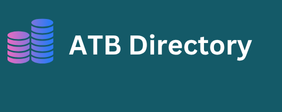Integrating with other data sources is crucial for businesses looking to maximize their data analysis capabilities and make informed decisions. In this article, we will explore the benefits of integrating with other data sources and provide practical tips on how to successfully implement this process.
Why Integrate with Other Data Sources?
Integrating with other data sources allows businesses to gain a more comprehensive view of their data landscape. By combining data from various sources such as CRM systems, social media platforms, and IoT devices, businesses can uncover valuable WhatsApp Data insights that would otherwise remain hidden. This integrated approach enables businesses to make more informed decisions, identify new opportunities, and improve overall performance.
Improved Data Accuracy
When businesses integrate with other data sources, they can eliminate data silos and ensure that all data is accurate and up to date. This improved data accuracy allows businesses to make decisions based on reliable information, leading to more successful outcomes.
Expanded Data Insights
Integrating with other data sources provides businesses with access to a broader range of data insights. By combining data from various sources, businesses can identify trends, patterns, and correlations that would have been missed if data was analyzed in isolation. These insights can help businesses make smarter decisions and stay ahead of the competition.
Enhanced Data Security
Integrating with other data sources allows businesses to centralize their data management processes and implement robust security measures. By consolidating data from various sources into a secure data warehouse, businesses can protect sensitive information and prevent data breaches. This enhanced data security provides peace of mind and ensures compliance with data protection regulations.
Streamlined Data Analysis
Integrating with other data sources streamlines the data analysis process and saves time and resources. Instead of manually collecting and consolidating data from multiple sources, businesses can automate this process and focus on deriving insights from the data. This streamlined approach enables businesses to make faster decisions and respond quickly to changing market conditions.
How to Successfully Integrate with Other Data Sources
Successfully integrating with other data sources requires careful planning and implementation. Here are some tips to help businesses seamlessly integrate with other data sources:
- Identify Business Goals: Before integrating with other data sources, businesses should clearly define their data analysis goals and objectives. Understanding what insights they hope to gain from integrating with other data sources will guide the integration process and ensure that the right data is collected and analyzed.
- Choose the Right Integration Tool: Selecting the right integration tool is essential for successful data integration. Businesses should choose a tool that aligns with their data sources, data formats, and integration requirements. Popular integration tools include Informatica, Talend, and MuleSoft.
- Establish Data Governance Policies: Implementing data governance policies is crucial for maintaining data quality and ensuring compliance with data regulations. Businesses should establish data governance policies that outline data ownership, security protocols, and data usage guidelines.
- Test Data Integration Processes: Before fully implementing data integration processes, businesses should conduct thorough testing to ensure that data is accurately and seamlessly integrated. Testing helps identify any issues or inconsistencies in the data integration process and allows businesses to make necessary adjustments.
- Monitor Data Integration Performance: Once data integration processes are in place, businesses should continuously monitor data integration performance to ensure data accuracy and reliability. Monitoring data integration performance allows Senegal Mobile Phone Numbers Powder businesses to detect any anomalies or errors in the data integration process and take corrective actions.
In conclusion, integrating with other data sources is essential for businesses looking to harness the full power of their data. By following the tips outlined in this article, businesses can successfully integrate with other data sources and unlock valuable insights that drive business growth and success.


